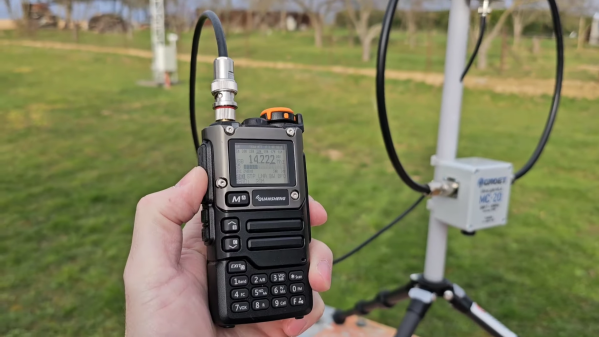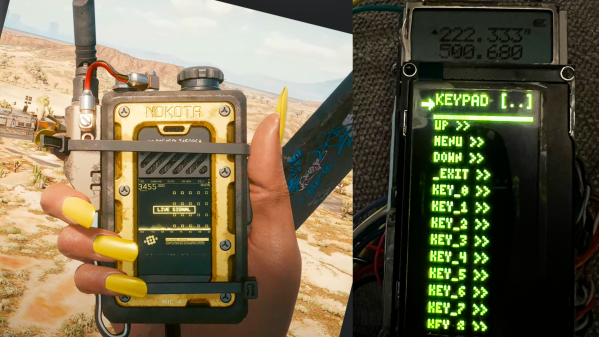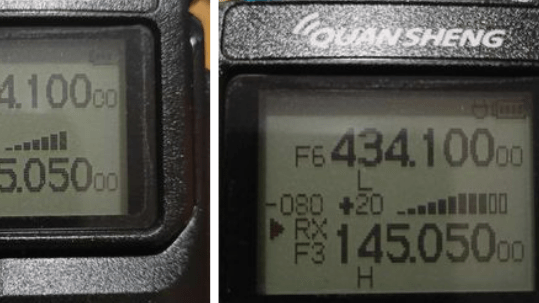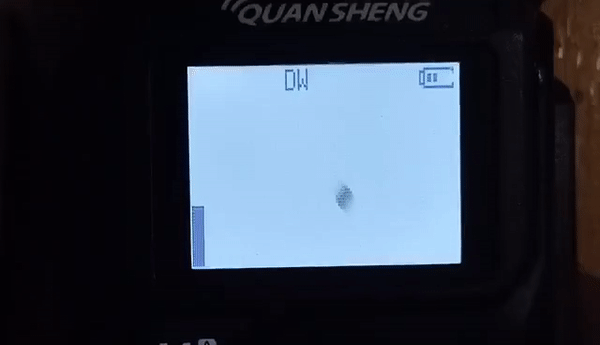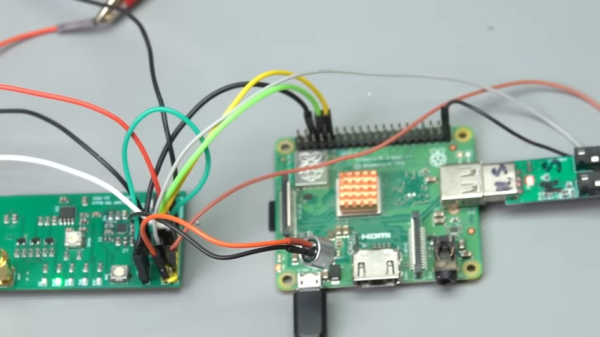Watch out, Baofeng; there’s a new kid on the cheap handy talkie market, and judging by this hardware and firmware upgrade to the Quansheng UV-K5, the radio’s hackability is going to keep amateur radio operators busy for quite a while.
Like the ubiquitous Baofeng line of cheap transceivers, the Quansheng UV-K5 is designed to be a dual-band portable for hams to use on the 2-meter VHF and 70-centimeter UHF bands. While certainly a useful capability, these bands are usually quite range-limited, and generally require fixed repeaters to cover a decent geographic area. For long-range comms you want to be on the high-frequency (HF) bands, and you want modulations other than the FM-only offered by most of the cheap HT radios.
Luckily, there’s a fix for both problems, as [Paul (OM0ET)] outlines in the video below. It’s a two-step process that starts with installing a hardware kit to replace the radio’s stock receiver chip with the much more capable Si4732. The kit includes the chip mounted on a small PCB, a new RF choke, and a bunch of nearly invisible capacitors. The mods are straightforward but would certainly benefit from the help of a microscope, and perhaps a little hot air rework. Once the hardware is installed and the new firmware flashed, you have an HT that can receive signals down to the 20-meter band, with AM and SSB modulations, and a completely redesigned display with all kinds of goodies.
It’s important to note that this is a receive-only modification — you won’t be transmitting on the HF bands with this thing. However, it appears that the firmware allows you to switch back and forth between HF receive and VHF/UHF transceive, so the radio’s stock functionality is still there if you need it. But at $30 for the radio and $12 for the kit, who cares? Having a portable HF receiver could be pretty handy in some situations. This looks like yet another fun hack for this radio; we’ve seen a few recently, including a firmware-only band expansion and even a Trojan that adds a waterfall display and a game of Pong. Continue reading “Open HT Surgery Gives Cheap Transceiver All-Band Capabilities”

